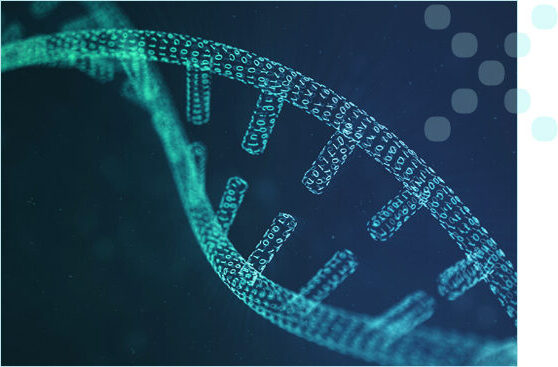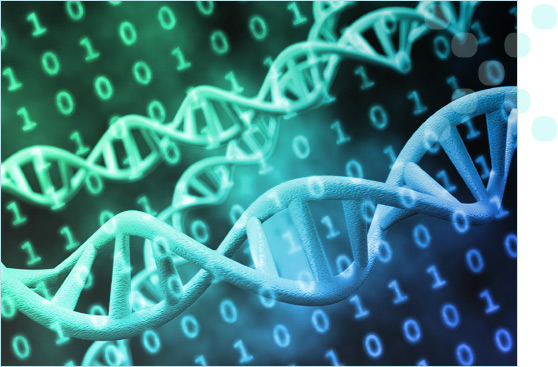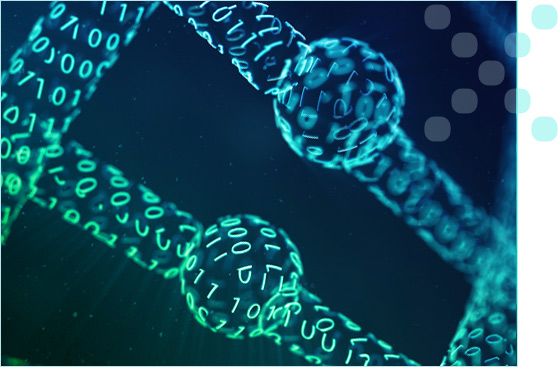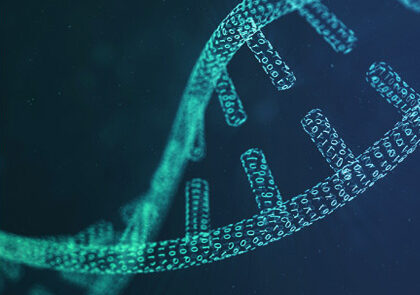
RESEARCH
Why DNA Storage?
Modern information-based society largely relies on trusted information storage in a large variety of setups, ranging from long-term digital archiving to embedding information into products. DNA is a promising future storage medium for such diverse applications as it offers sustainable and robust long-term information storage at extraordinary information density. DNA will also never become obsolete.
DiDAX Research Focuses

Efficient & Cost-Effective Archiving
To make DNA data storage cost-effective, advancements in synthesis and sequencing technologies, as well as optimized encoding techniques, are necessary. DiDAX aims to enhance DNA data storage through improved synthesis methods, novel coding schemes, and error-correction strategies, demonstrating the feasibility with a 100MB proof of concept. By using composite DNA letters and optimizing synthesis cycles, the project seeks to increase information capacity and reduce costs, making DNA storage competitive with existing technologies.

In-Product Information Storage & Applications
The DiDAX Consortium has demonstrated with a proof of concept titled “DNA-of-things,” to successfully embed significant data volumes into products. Based on these achievements, DiDAX will further improve the methods through affordable synthesis devices, enhanced encoding algorithms, improved encapsulation and embedding in physical products.

Labeling, Authentication & Documentation
In the DiDAX project, we will develop and analyze novel authentication protocols demonstrating end-to-end proofs of concept (PoCs). One PoC will utilize a specific authentication protocol, while the other will employ CRISPR-mediated segmentation of DNA. Additionally, we will innovate by developing one-way functions based on DNA, providing a physical basis for secure cryptographic applications, and creating a novel mathematical framework for rigorous analysis of these DNA-based protocols.

Photolithographic DNA Synthesis
Photolithographic synthesis, while highly scalable and low-cost, suffers from high error rates due to optical effects, which can be mitigated through novel encoding and decoding strategies. The DiDAX project aims to further develop this approach by optimizing synthesis density and improving computational methods to significantly reduce costs and enhance the feasibility of DNA-based data storage.

Composite DNA Synthesis
The photochemical synthesis of composite DNA libraries aims to enhance information content per nucleotide. This approach will be evaluated for its efficiency and error rates by comparing premixed and on-the-fly phosphoramidite mixes. It will also explore the use of trimer phosphoramidites for coding one full codon at a time. Trimer strategies, combined with composite synthesis, are expected to achieve a logical density of over 9 bits per cycle, surpassing current large-scale standards.

Encapsulation & Embedding Technologies
DiDAX will simplify the synthesis and functionalization of DNA-containing silica nanoparticles to enhance their compatibility with various media and enable automation. Analytical methods will be established to assess particle properties, and the manufacturability of materials with DNA-based information carriers will be demonstrated for high-performance polymers and medical materials.

Enhanced DNA Readout
DiDAX will improve the efficiency of DNA-based data retrieval by developing novel DNA concatenation techniques, enhancing long-read sequencing protocols, and building supporting bioinformatics tools. These innovations aim to streamline the readout process, reduce costs, and increase data fidelity and throughput for data retrieval pipelines from the DNA data storage solutions.